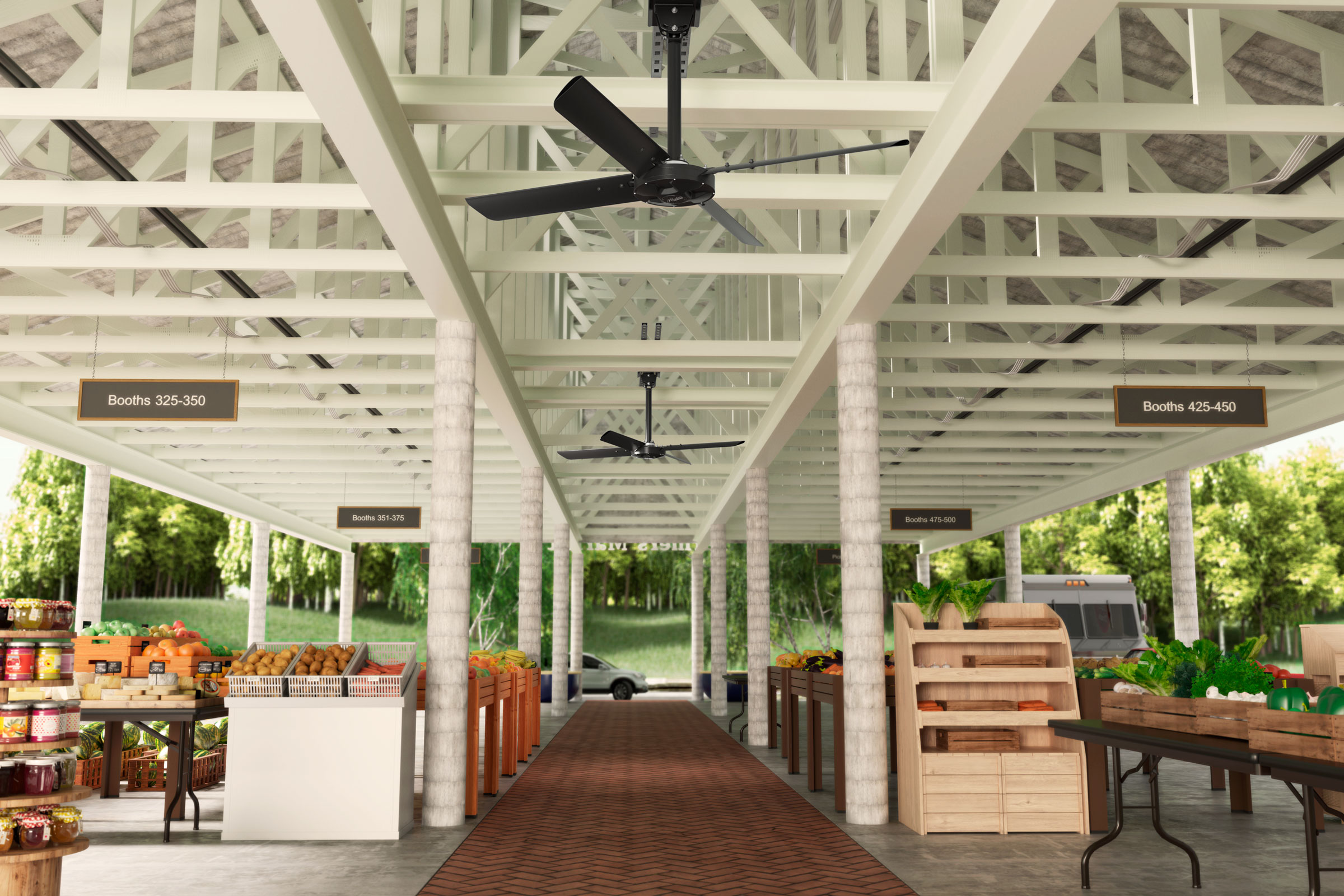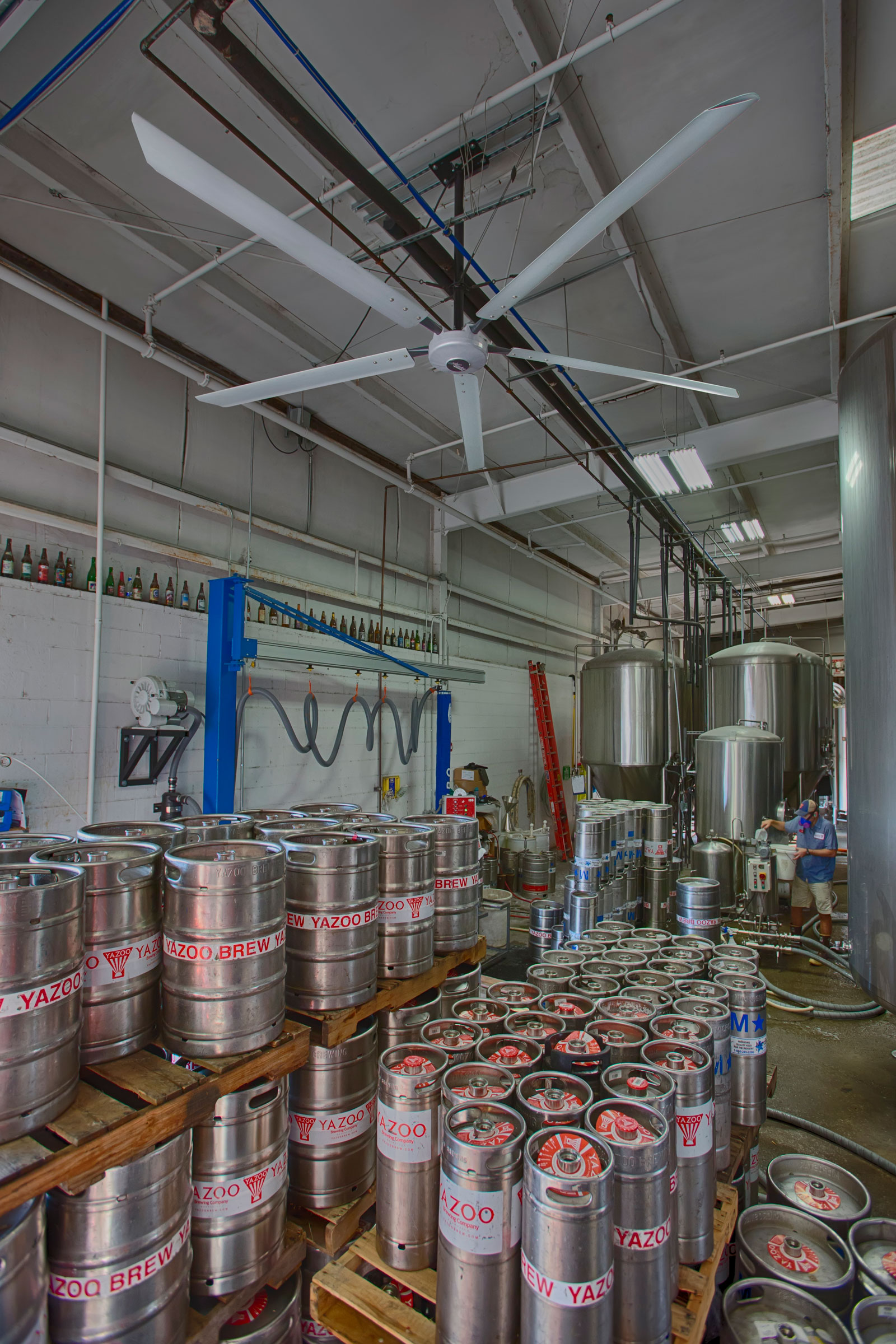Story at a glance:
- The movement of air drops the perception of temperature by 7 to 12 degrees Fahrenheit.
- Moving air gently evaporates skin moisture, removing heat from the body.
- Even after 135 years Hunter Fan keeps revealing innovative solutions.
The use of ceiling fans in America goes back to the water-turbine driven mechanisms of the mid-19th century. A lot has changed since then—including our understanding of why air movement can be so beneficial.
Recent heightened energy consciousness and fan design innovations have increased the demand for increasingly smart fans across residential, commercial, retail, and agricultural applications.
And the innovations continue, according to Mark D’Agostino, senior vice president and general manager of the industrial division of Hunter Fan/Industrial. “Our motor technology, which rid the fans of a gearbox, changed the industry already,” D’Agostino says.
We talked to Hunter Fan about HVLS fan benefits, the options, and more.
What is an HVLS Fan?
- The Hunter Trak fan was installed in this fitness studio. Photo courtesy of Hunter Fan
- Hunter Fan’s Titan fan is seen here keeping a brewery’s stock and staff cool. Photo courtesy of Hunter Fan
In the 21st century, principles of aerodynamic physics and advancement in motor technologies have enabled the efficiencies and effectiveness of HVLS (high-volume, low-speed) fans. The larger column of air pushed downward from these fans (defined by blade diameters ranging from 7 to 24 feet) encounters less friction, which then pushes more air outward when it reaches the floor. The larger volume of moving air effectively cools the skin, displaces odors and particulates, and more quickly evaporates unwanted moisture on surfaces.
Energy Efficiency
By the physics of their design HVLS fans require minimal electric power while moving far more air than if several smaller fans were used. Hunter has taken that basic efficiency to heart. “Our objective is to move the most air with the least energy,” says D’Agostino. He explains that the proprietary Hunter blade designs, developed in partnership with members of the aerospace industry, maximize air movement efficiency.
The company also approaches every large-space customer (think warehouses, big-box stores, houses of worship, etc.) from a consultative, partnership approach. This helps those customers maximize their air movement strategies within the unique architectural configurations of each building by placing the right fans in the right places.
Human Comfort

The Trak fan also works on restaurant patios and comes in white, silver, or black. Photo courtesy of Hunter Fan
There is a reason HVLS fans are used in workplaces: The movement of air drops the perception of temperature by 7 to 12 degrees Fahrenheit. Moving air gently evaporates skin moisture, removing heat from the body. This is particularly beneficial in workplaces where mechanical air conditioning is cost prohibitive.
Two studies show the benefits on employee productivity and satisfaction. One (“Comfort Conditioning the Plant with Evaporative Cool,” Joseph Marg, Plant Engineering, 1976) demonstrated that industrial output drops by 18% when in-plant temperatures rise above 85 degrees. Further, such conditions foster a 40% increase in errors. In another study, a survey of 1,601 workers across the US (“Future Workplace Wellness Study,” conducted by Future Workplace, a human resources advisory firm) found those workers ranked better air quality over onsite gyms, standing desks, and other common workplace wellness initiatives.
What are Other Benefits?
Some of the earliest adopters of HVLS fans were dairy farmers, whose cows suffered from excessive heat in barns that weren’t air-conditioned, which was just about all of them.
For people working in industrial environments HVLS fans can remove excess moisture as well as odors and particulates that can negatively impact worker health. Occupational Health & Safety magazine recognizes that, because HVLS fans can move air at a rate greater than 200,000 cubic feet per minute, they lessen the chances employees will experience “sick building syndrome.” Sick building syndrome has been tied to acute or prolonged illness, lower productivity, and more sick days. A good example is a manufactured home factory, where solvents, paints, joint compound, and so forth could potentially affect indoor air quality. HVLS fans could benefit the space greatly by helping to disperse the potentially harmful odors. In a pandemic and post-pandemic world, the appreciation for air movement has never been greater.
What About Aesthetics?
Where industrial chic rules, HVLS fans can reign over all. There is a reason these fans are popular in breweries and distilleries, restaurants, retail, and event venues.
Eliminating the clunky gearbox motor, Hunter’s HVLS fans offer a sleek design thanks to their direct drive motors.
Hunter’s streamlined slim blades come in 11 colors and can be customized to blend in or stand out. “My favorite is in a custom car showroom in Key West, where the fans are lime green,” says D’Agostino. “No matter your space, we’re sure to have a color, size, and design that’s the perfect fit.”




